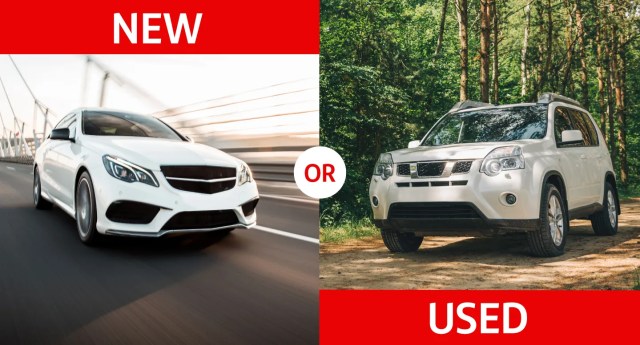 When deciding whether to buy a new or used car, price is usually one factor high up the list. The average transaction price for a new vehicle was $47,465 in 2024, about $20,000 more than for pre-owned, according to Edmunds, with most new and around a third used-car buyers choosing to finance, says Statista. As you think about what fits your situation, it helps to know some key differences between new and used car financing.
When deciding whether to buy a new or used car, price is usually one factor high up the list. The average transaction price for a new vehicle was $47,465 in 2024, about $20,000 more than for pre-owned, according to Edmunds, with most new and around a third used-car buyers choosing to finance, says Statista. As you think about what fits your situation, it helps to know some key differences between new and used car financing.
1. Loan amount
The effect of higher prices for new vehicles means that the average loan amount is greater for a new ride, too. Numbers from Experian show that the average loan was $41,572 for new and $26,468 for used vehicles toward the end of 2024, while monthly payments for new vehicles were also higher at $742 compared to $525. Keep in mind, however, that other factors such as a trade-in, down payment, the loan duration and your credit scores will also influence how a loan takes shape, including both the loan amount and monthly payment.
2. Interest rate
Although new cars generally come with higher prices, interest rates tend to be lower. Overall, this reflects the reduced risk involved in lending for new vehicles. Two important reasons are that lenders are better able to gauge the value of a new car over a used model and that buyers of new cars generally have higher credit scores based on better credit histories.
3. Chances of negative equity
New cars lose value more quickly than used vehicles which, coupled with higher transaction prices, creates a higher chance of negative equity – when you owe more on your loan than the vehicle is worth. The rate of depreciation varies according to the type of vehicle purchased but the possibility of being “upside down” can be reduced by taking steps such as making a good down payment to lower your loan amount.
4. Access to financing
Is it easier to finance a new or used car? Your own financial situation will have a strong bearing here but some lenders operate lending restrictions according to a vehicle’s age and mileage, so you may encounter fewer used car financing options across the market.
Find what’s right for you
Understanding the differences between new and used vehicle financing can form a valuable part of your car-buying decision. Like any major purchase, it’s worth beginning the process by budgeting what you can afford so that, in this case, your vehicle priorities and the role of financing can play into your decision more closely.
Take a look at our finance calculators for help as you go, and see if you pre-qualify for financing with Drive®, by Santander®. Pre-qualification gives you a better idea of whether you’ll be approved for a loan and, if you pre-qualify, you can even customize your potential loan terms and shop vehicles that match.



